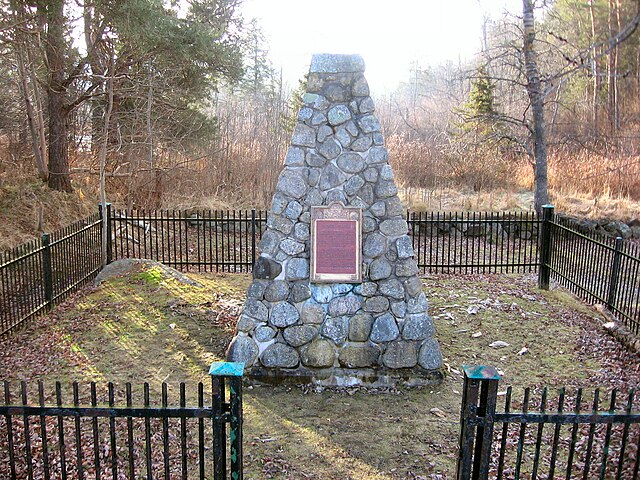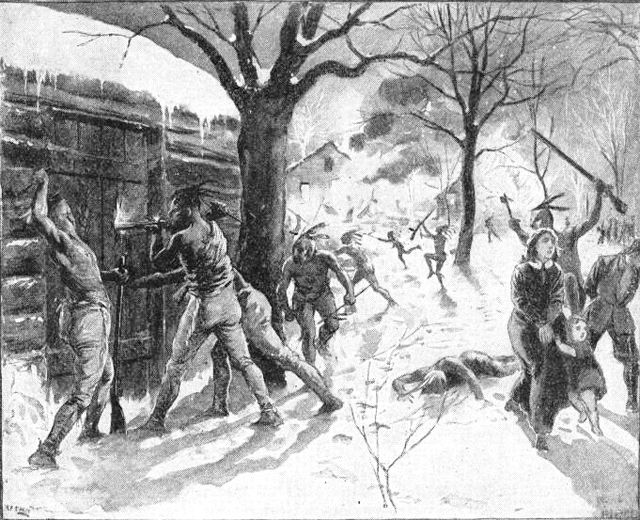Battle of Bloody Creek (1711)
The Battle of Bloody Creek was fought on 10/21 June 1711 during Queen Anne's War. An Abenaki militia successfully ambushed British soldiers at a place that became known as Bloody Creek after the battles fought there. The creek empties into the Annapolis River at present day Carleton Corner, Nova Scotia, and was also the location of a battle in 1757.
Cairn erected in 1932 by the Historic Sites and Monuments Board
Nova Scotia Governor Samuel Vetch
Queen Anne's War (1702–1713) was the second in a series of French and Indian Wars fought in North America involving the colonial empires of Great Britain, France, and Spain; it took place during the reign of Anne, Queen of Great Britain. In the United States, it is regarded as a standalone conflict under this name. Elsewhere it is usually viewed as the American theater of the War of the Spanish Succession. It is also known as the Third Indian War. In France it was known as the Second Intercolonial War.
Stone fortifications of Port Royal, Acadia, 1702. Few settlements had stone fortification at the start of the war.
Pierre Le Moyne d'Iberville sought to establish a relationship with native people in the Mississippi watershed as a result of the last war with England.
New French raid on Deerfield, Massachusetts, in February 1704
Hendrick Tejonihokarawa, a Mohawk chief, was successful in gaining support from Anne, Queen of Great Britain, to launch an expedition to take Quebec City.






